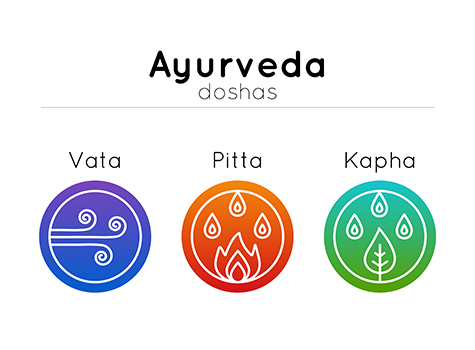
According to the American Heart Association, heart disease continues to be the number one health threat for women. Nearly 80 percent of cardiac events can be prevented by awareness and lifestyle changes.
National Wear Red Day is February 7, 2020. Each year the American Heart Association hosts a variety of events around the country to raise awareness for heart disease in women. It’s no longer just about wearing red; it’s no longer just about sharing heart health facts. It’s about all women making a commitment to stand together with Go Red and taking charge of their own heart health and the health of their loved ones.
Signs and Symptoms of Heart Attack
If you have any of these signs, call 9-1-1 and get to a hospital right away.
1. Uncomfortable pressure, squeezing, fullness or pain in the center of your chest. It lasts more than a few minutes or goes away and comes back.
2. Pain or discomfort in one or both arms, the back, neck, jaw or stomach.
3. Shortness of breath with or without chest discomfort.
4. Other signs such as breaking out in a cold sweat, nausea or lightheadedness.
5. As with men, women’s most common heart attack symptom is chest pain or discomfort. But women are somewhat more likely than men to experience some of the other common symptoms, particularly shortness of breath, nausea/vomiting and back or jaw pain.
Signs and Symptoms of Stroke
1. If you have any of these signs, call 9-1-1 and get to a hospital right away.
2. Sudden numbness or weakness of the face, arm or leg, especially on one side of the body
3. Sudden confusion, trouble speaking or understanding
4. Sudden trouble seeing or blurred vision in one or both eyes
5. Sudden trouble walking, dizziness, loss of balance or coordination
6. Sudden severe headache with no known cause
In honor of Go Red for Women, let us talk about the benefits of red colored foods!
Red Fruits & Vegetables
All red colored fruits and vegetables are loaded with heart healthy nutrients. Powerful phytochemicals such as Lycopene, Ellagic acid, Quercetin, and Hesperidin, are present in red colored foods. These nutrients reduce the risk of cancer, lower blood pressure, reduce tumor growth and LDL cholesterol levels, help remove free-radicals, and support join tissue. These foods are beneficial for eye health and reducing risk of stroke.
Here is a list of a few red fruits and vegetables, and the nutrients they provide. It is always preferable to eat what is in season.
• Beets: folate, lycopene, and anthocyanins
• Cherries: antioxidants, fiber, vitamins A & C, calcium, potassium, and folic acid
• Cranberries: rich source of proanthocyanidins which have anti-bacterial properties that help prevent urinary tract infections and H.Pylori stomach ulcers
• Pomegranate: fiber, folate, potassium, vitamins C, K
• Raspberries: vitamin C, fiber, and antioxidants such as quercetin and gallic and ellagic acid.
• Red apples: fiber, anthocyanins, vitamins A & C, and minerals potassium, phosphorous, copper
• Red Bell peppers: vitamins A & C, fiber
• Red grapes: vitamin C, fiber, antioxidants such as quercetin
• Strawberries: antioxidants, vitamins A & C, fiber, potassium, folate, and manganese
• Tomatoes: good source of lycopene that helps prevent prostate cancer and breast cancer; potassium, vitamin C
• Watermelon: lycopene, and minerals such as phosphorous, magnesium, copper, calcium, iron and manganese
Other foods with red/pink colors include: Blood oranges, Guava, Papaya, Pink/Red grapefruit, Radicchio, Radishes, Red onions, Red pears, Red potatoes, Rhubarb, Plums.
Tips to improve heart health:
• Choose healthy fats: Limit saturated fats, avoid trans-fats, and eat small amounts of healthy unsaturated fats from plant sources. Foods with soluble fiber and omega 3 fats such as walnuts, flax seeds and chia seeds also help lower cholesterol and improve hear health.
• Choose healthy carbohydrates: Simple starches and sugars can raise triglycerides, increase insulin resistance, and thus increase the risk of heart disease. Foods with complex carbohydrates and fiber, on the other hand, are extremely important. Include a variety of whole grains and beans, and increase variety and amount of vegetables in your diet.
• Don’t overdo protein: Excessive protein from animal sources has been proven to increase the risk of heart attacks. This includes meat, dairy, eggs, and protein powders. Overdoing protein can also damage kidneys.
• Limit sodium: Limit processed packaged foods and limit eating out.
• Drink adequate amount of water: Avoid beverages with artificial colors and artificial sweeteners.
• Regular exercise: Daily physical activity has protective influence on the heart. You do not have to join a gym. Make a resolution to move more. The recommendations for physical activity are at least 150 minutes per week.
• Learn to manage stress: Stress and negative emotions such as anger have a negative effect on heart health. These conditions can increase inflammatory hormones and start a chain reaction that can lead to a heart attack. Yoga, meditation, and breathing exercises can help
———-
Parul Kharod, MS, RD, LDN is a registered dietitian and licensed nutritionist and works as a Clinical Dietitian with Outpatient Nutrition Services at WakeMed Hospital in Cary and Raleigh. She can be reached at [email protected]
Posted: Monday, February 3, 2020



